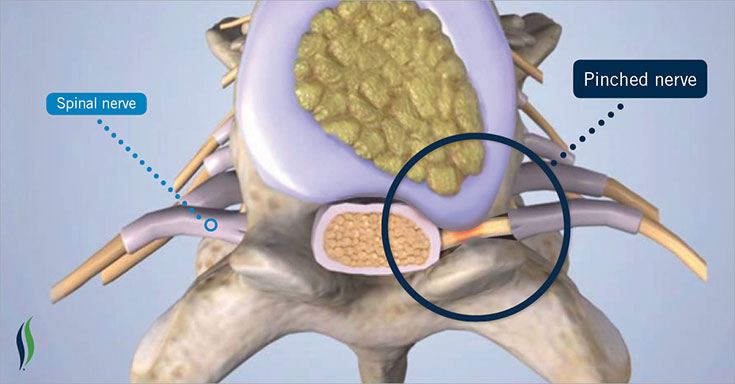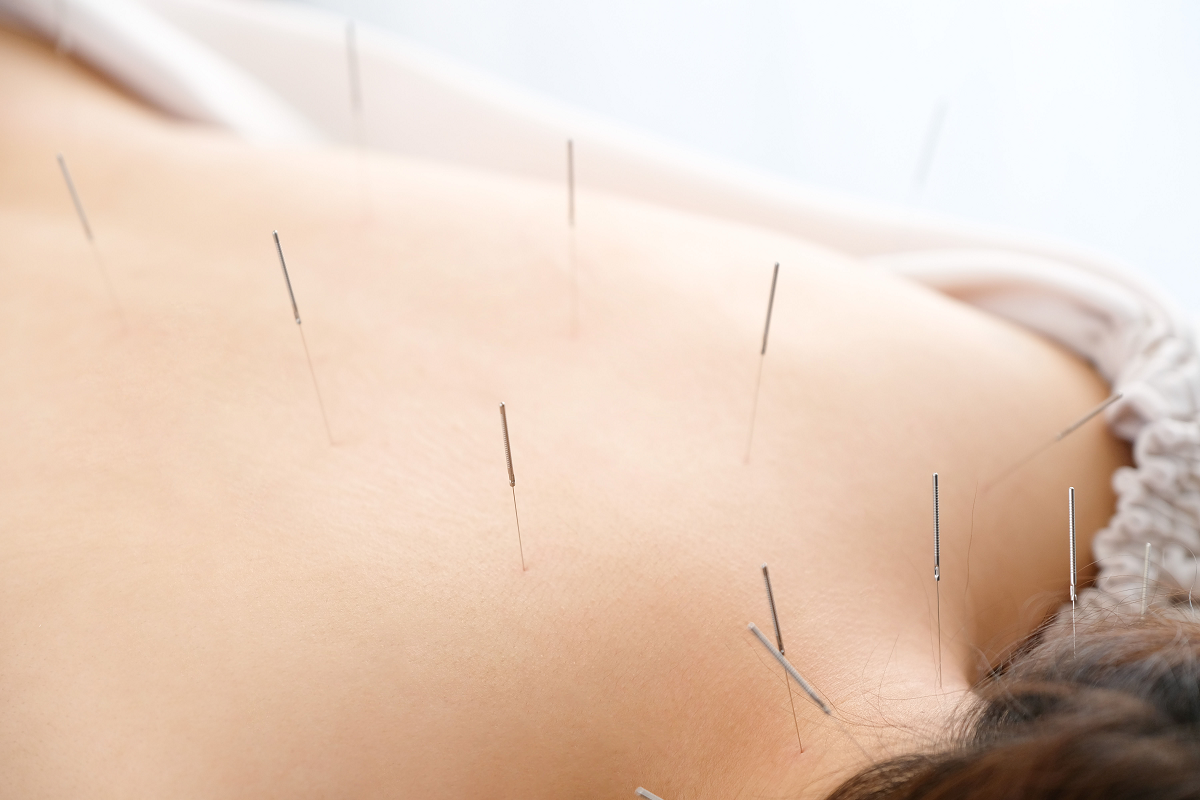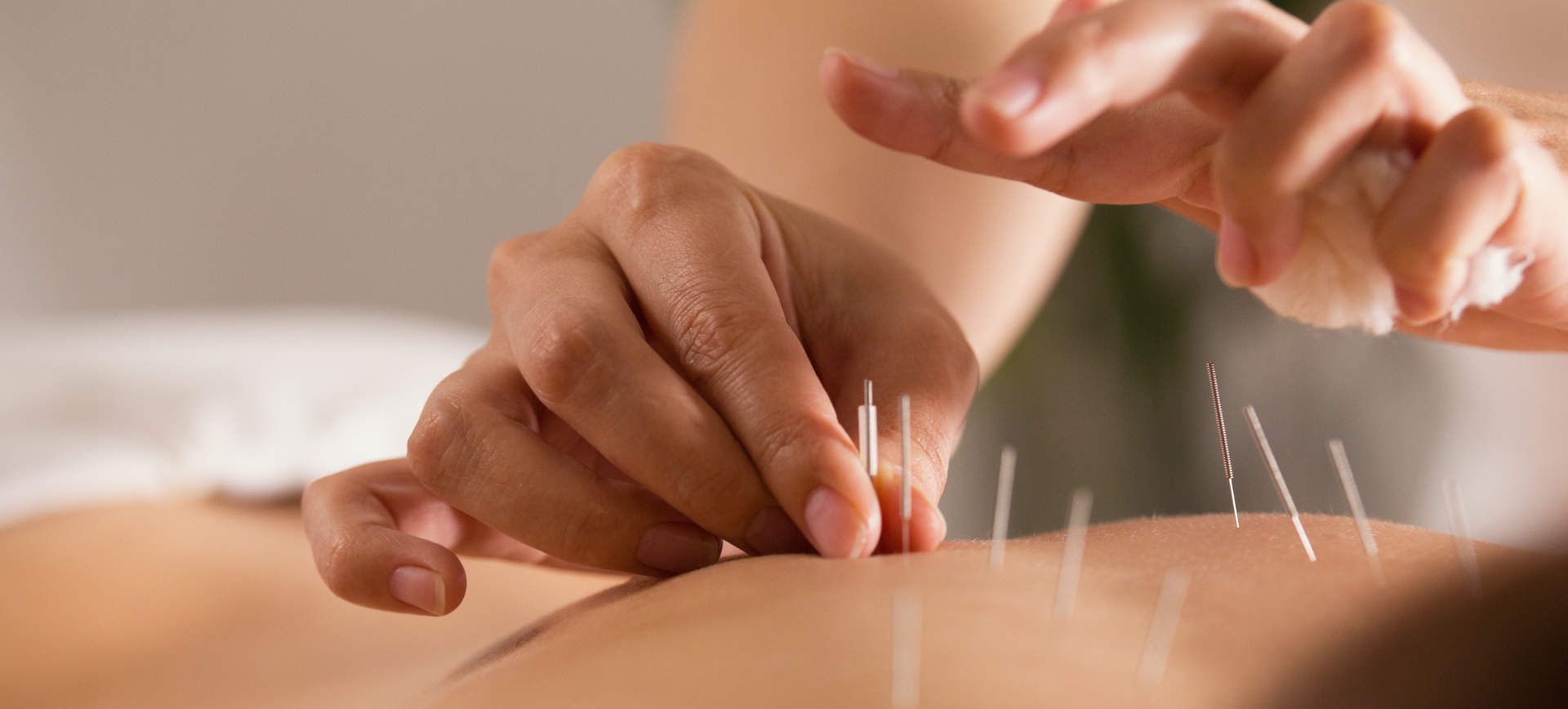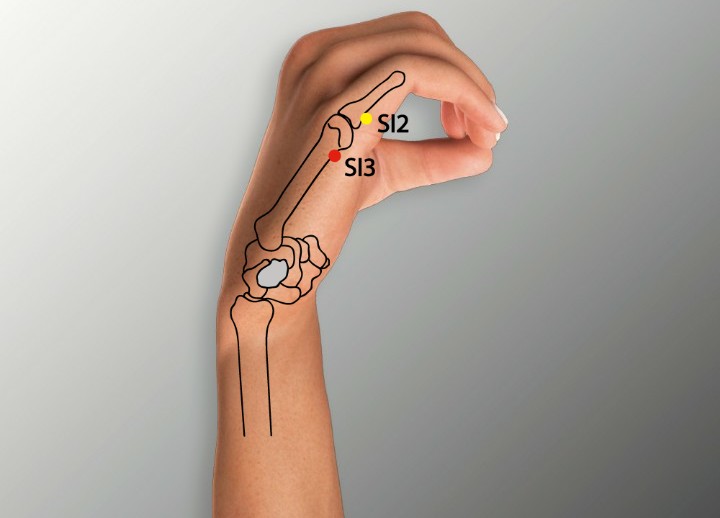Radiculopathy and Acupuncture Treatment: A Comprehensive Guide
Radiculopathy is a condition that affects countless individuals, causing pain, numbness, and weakness due to nerve root compression or irritation. For those seeking relief, acupuncture has emerged as a promising complementary treatment. This article explores radiculopathy in depth, including its causes, symptoms, and diagnosis, and examines how acupuncture can serve as an effective treatment option. Whether you’re dealing with cervical, lumbar, or thoracic radiculopathy, this guide offers insights into managing your condition and improving your quality of life.
- What Is Radiculopathy?
- Causes of Radiculopathy
- Symptoms of Radiculopathy
- Diagnosing Radiculopathy
- Conventional Treatments for Radiculopathy
- Acupuncture Treatment
- How Acupuncture Treats Radiculopathy
- What to Expect During an Acupuncture Session
- Acupuncture Points for Radiculopathy
- Benefits of Acupuncture for Radiculopathy
- Risks and Considerations
- Integrating Acupuncture with Other Treatments
- Who Can Benefit from Acupuncture for Radiculopathy?
- Acupuncture vs. Other Alternative Therapies
- Conclusion
What Is Radiculopathy?
Radiculopathy occurs when a spinal nerve root is compressed, inflamed, or irritated, leading to symptoms that radiate along the nerve’s pathway. Often referred to as a “pinched nerve,” radiculopathy can affect various regions of the spine, including:
Maybe You Need:
- Cervical radiculopathy: Impacts the neck and upper spine, often causing pain in the shoulders, arms, or hands.
- Lumbar radiculopathy: Affects the lower back, commonly leading to sciatica, with pain radiating down the legs.
- Thoracic radiculopathy: Less common, occurring in the mid-back and causing pain around the chest or abdomen.

Causes of Radiculopathy
Radiculopathy can result from several underlying conditions, including:
- Herniated Discs: When the inner material of a spinal disc bulges or ruptures, it can press against a nerve root.
- Spinal Stenosis: Narrowing of the spinal canal can compress nerve roots.
- Degenerative Disc Disease: Age-related wear and tear can lead to disc deterioration and nerve compression.
- Bone Spurs: Osteophytes, or bony growths, can encroach on nerve roots.
- Injury or Trauma: Accidents or repetitive strain can cause inflammation or structural damage.
- Other Conditions: Scoliosis, spondylolisthesis, or tumors may also contribute to nerve root compression.
Symptoms of Radiculopathy
Symptoms vary depending on the affected nerve root and spinal region but often include:
- Pain: Sharp, burning, or shooting pain that radiates along the nerve pathway (e.g., down the arm or leg).
- Numbness or Tingling: A “pins and needles” sensation in the affected area.
- Weakness: Reduced muscle strength in the arms, hands, or legs.
- Loss of Reflexes: Diminished reflex responses in severe cases.
For example, lumbar radiculopathy may cause sciatica, characterized by pain from the lower back through the buttocks and down the leg. Cervical radiculopathy might result in neck pain that extends to the shoulder or fingers.
Diagnosing Radiculopathy
Accurate diagnosis is critical for effective treatment. Healthcare providers typically use a combination of:
- Medical History and Physical Exam: Assessing symptoms, reflexes, muscle strength, and sensation.
- Imaging Tests: X-rays, MRI, or CT scans to visualize spinal structures and identify nerve compression.
- Electromyography (EMG): Measures electrical activity in muscles to confirm nerve dysfunction.
- Nerve Conduction Studies: Evaluates nerve signal transmission to pinpoint damage.
Early diagnosis can prevent complications and guide treatment, whether conventional or complementary, such as acupuncture.

Conventional Treatments for Radiculopathy
Before exploring acupuncture, it’s important to understand standard treatments for radiculopathy, which may include:
- Medications: Nonsteroidal anti-inflammatory drugs (NSAIDs), corticosteroids, or muscle relaxants to reduce pain and inflammation.
- Physical Therapy: Exercises to improve strength, flexibility, and posture, often targeting the affected spinal region.
- Epidural Steroid Injections: Deliver anti-inflammatory medication directly to the nerve root.
- Surgery: In severe cases, procedures like discectomy or laminectomy may be necessary to relieve nerve compression.
While these treatments can be effective, they may not work for everyone, and some carry risks or side effects. This has led many patients to explore alternative therapies like acupuncture.
Acupuncture Treatment
Acupuncture is a traditional Oriental medicine (TOM) practice that involves inserting thin, sterile needles into specific points on the body, known as acupuncture points or meridians. According to TOM, these points regulate the flow of energy to restore balance and promote healing. Modern research suggests acupuncture may work by:
- Stimulating the nervous system to release endorphins and other pain-relieving chemicals.
- Improving blood flow to reduce inflammation and promote tissue repair.
- Modulating pain signals in the brain and spinal cord.
Acupuncture is widely used for pain management, including conditions like radiculopathy, and is recognized by organizations like the World Health Organization (WHO) for its therapeutic potential.
How Acupuncture Treats Radiculopathy
Acupuncture offers a non-invasive, drug-free approach to managing radiculopathy symptoms. Here’s how it can help:
- Pain Relief
Acupuncture is renowned for its ability to alleviate pain. By targeting specific acupuncture points, practitioners can stimulate the release of natural painkillers like endorphins and serotonin. For radiculopathy patients, this can reduce the intensity of radiating pain, whether in the neck, arms, or legs.
- Reducing Inflammation
Inflammation often exacerbates nerve compression in radiculopathy. Acupuncture may decrease pro-inflammatory cytokines and increase anti-inflammatory substances, helping to soothe irritated nerve roots.
- Improving Nerve Function
By enhancing blood circulation and reducing muscle tension, acupuncture may support nerve healing and improve signal transmission. This can alleviate numbness, tingling, and weakness associated with radiculopathy.
- Relaxing Muscles and Improving Mobility
Muscle spasms and tightness often accompany radiculopathy, worsening pain and limiting movement. Acupuncture can relax tight muscles, improve spinal flexibility, and enhance overall mobility.
- Addressing Underlying Causes
Acupuncture takes a holistic approach, addressing not only symptoms but also contributing factors like stress, poor posture, or systemic imbalances. This comprehensive strategy can support long-term recovery.

Research on acupuncture for radiculopathy is growing, with several studies highlighting its efficacy:
- A 2018 systematic review in Pain Medicine found that acupuncture was effective in reducing pain and improving function in patients with lumbar radiculopathy, particularly when combined with physical therapy.
- A 2020 study in The Journal of Pain Research reported that acupuncture significantly reduced pain scores in patients with cervical radiculopathy compared to sham acupuncture.
- A 2019 meta-analysis in Evidence-Based Complementary and Alternative Medicine concluded that acupuncture provided short-term pain relief for sciatica caused by lumbar radiculopathy.
While more large-scale, high-quality studies are needed, existing evidence suggests acupuncture is a valuable adjunctive therapy for radiculopathy, especially for those seeking alternatives to medication or surgery.
What to Expect During an Acupuncture Session
If you’re considering acupuncture for radiculopathy, here’s what you can expect:
- Initial Consultation
Your acupuncturist will review your medical history, symptoms, and lifestyle to develop a personalized treatment plan. They may ask about your pain patterns, stress levels, and overall health.
- Acupuncture Session
- Preparation: You’ll lie on a comfortable table, and the practitioner will clean the skin at the acupuncture sites.
- Needle Insertion: Thin, sterile needles are inserted into specific points, which may be near the affected area (e.g., lower back for lumbar radiculopathy) or distal points (e.g., hands or feet) to regulate energy flow. You may feel a slight pinch or tingling, but discomfort is minimal.
- Duration: Needles typically remain in place for 15–30 minutes while you relax. Some practitioners may use heat, electrical stimulation, or gentle needle manipulation to enhance effects.
- Frequency: Treatment plans vary, but many patients start with 1–2 sessions per week for several weeks, adjusting based on progress.
- Post-Treatment
You may feel immediate relief or gradual improvement over days. Some experience mild soreness or fatigue, which typically resolves quickly. Your acupuncturist may recommend lifestyle changes, such as stretching or stress management, to support recovery.

Acupuncture Points for Radiculopathy
Acupuncture Points for Lumbar Radiculopathy (Sciatica)
Lumbar radiculopathy, often manifesting as sciatica, causes pain radiating from the lower back through the buttocks and down the leg. Acupuncture points for this condition target the lower back, hips, and legs to relieve nerve compression and improve mobility.
- BL40 (Weizhong)
- Location: At the midpoint of the popliteal crease (behind the knee).
- Indications: Relieves lower back pain, sciatica, and leg stiffness by clearing heat and activating the Bladder meridian, which runs along the spine and legs.
- Relevance to Radiculopathy: BL40 is a key point for treating sciatic pain, as it reduces inflammation along the sciatic nerve pathway and relaxes tight hamstrings that may exacerbate symptoms.
- GB30 (Huantiao)
- Location: On the lateral side of the hip, one-third of the distance between the greater trochanter and the sacral hiatus.
- Indications: Alleviates sciatica, hip pain, and leg numbness by stimulating the Gallbladder meridian, which governs the lateral body.
- Relevance to Radiculopathy: GB30 directly targets the sciatic nerve’s path, making it effective for relieving radiating pain and improving hip mobility in lumbar radiculopathy.
- BL23 (Shenshu)
- Location: 1.5 cun lateral to the lower border of the spinous process of the second lumbar vertebra (L2).
- Indications: Strengthens the lower back, supports kidney energy, and reduces pain and stiffness in the lumbar region.
- Relevance to Radiculopathy: BL23 addresses underlying weaknesses in the lower back, reducing nerve irritation and supporting spinal health in chronic cases.
- BL25 (Dachangshu)
- Location: 1.5 cun lateral to the lower border of the spinous process of the fourth lumbar vertebra (L4).
- Indications: Relieves lower back pain, sciatica, and intestinal issues by regulating the Large Intestine meridian.
- Relevance to Radiculopathy: BL25 is often used for lumbar radiculopathy caused by herniated discs at L4-L5, as it reduces local inflammation and muscle tension.

Acupuncture Points for Cervical Radiculopathy
Cervical radiculopathy affects the neck, shoulders, arms, or hands, causing pain, numbness, or weakness. Acupuncture points for this condition focus on the neck, upper back, and distal points to relieve nerve compression and restore function.
- LI4 (Hegu)
- Location: On the dorsum of the hand, between the first and second metacarpal bones, at the midpoint of the second metacarpal.
- Indications: Reduces neck pain, arm pain, and headaches by activating the Large Intestine meridian, which connects to the face and upper body.
- Relevance to Radiculopathy: LI4 is a powerful distal point for cervical radiculopathy, as it relieves pain along the nerve pathways to the arms and hands while promoting overall Qi flow.
- GB21 (Jianjing)
- Location: On the shoulder, midway between the spinous process of C7 and the acromion, at the highest point of the trapezius muscle.
- Indications: Relieves neck stiffness, shoulder pain, and radiating arm pain by dispersing tension in the Gallbladder meridian.
- Relevance to Radiculopathy: GB21 relaxes tight neck and shoulder muscles, which often contribute to nerve compression in cervical radiculopathy.
- SI3 (Houxi)
- Location: On the ulnar side of the hand, in the depression proximal to the head of the fifth metacarpal bone when the fist is clenched.
- Indications: Treats neck pain, upper back stiffness, and arm numbness by activating the Small Intestine meridian and the Du (Governing) meridian.
- Relevance to Radiculopathy: SI3 is effective for cervical radiculopathy, as it regulates the spine’s energy flow and reduces pain radiating to the upper limbs.
- GV14 (Dazhui)
- Location: Below the spinous process of the seventh cervical vertebra (C7), on the midline of the back.
- Indications: Clears heat, relieves neck and shoulder pain, and strengthens the spine by stimulating the Du meridian.
- Relevance to Radiculopathy: GV14 is a central point for cervical radiculopathy, as it addresses nerve irritation at the cervical spine and promotes systemic pain relief.

Acupuncture Points for Thoracic Radiculopathy
Thoracic radiculopathy, though less common, causes pain around the chest, abdomen, or mid-back. Acupuncture points for this condition target the thoracic spine and related meridians to alleviate discomfort and improve nerve function.
- BL15 (Xinshu)
- Location: 1.5 cun lateral to the lower border of the spinous process of the fifth thoracic vertebra (T5).
- Indications: Relieves chest pain, mid-back stiffness, and emotional stress by regulating the Heart meridian and supporting thoracic spine health.
- Relevance to Radiculopathy: BL15 is ideal for thoracic radiculopathy, as it reduces nerve-related pain in the chest and mid-back while calming the nervous system.
- PC6 (Neiguan)
- Location: On the inner forearm, 2 cun proximal to the wrist crease, between the tendons of the palmaris longus and flexor carpi radialis.
- Indications: Treats chest pain, nausea, and anxiety by activating the Pericardium meridian, which governs the chest and upper body.
- Relevance to Radiculopathy: PC6 is a distal point that helps relieve thoracic radiculopathy symptoms, such as chest discomfort or referred pain, while reducing stress that may worsen pain perception.
- BL17 (Geshu)
- Location: 1.5 cun lateral to the lower border of the spinous process of the seventh thoracic vertebra (T7).
- Indications: Promotes blood circulation, relieves mid-back pain, and reduces chest tightness by stimulating the Bladder meridian.
- Relevance to Radiculopathy: BL17 supports thoracic spine health and alleviates nerve compression symptoms, making it effective for thoracic radiculopathy.

How these points are used in treatment
Acupuncturists select points based on the patient’s specific symptoms, the type of radiculopathy, and their TCM diagnosis. For example:
- Lumbar Radiculopathy: A patient with sciatica might receive treatment at BL40 and GB30 to target leg pain, combined with BL23 to strengthen the lower back.
- Cervical Radiculopathy: A patient with arm numbness might be treated with LI4 and SI3 for distal relief, alongside GB21 to relax neck muscles.
- Thoracic Radiculopathy: A patient with chest pain might receive BL15 and PC6 to address local and systemic symptoms.
Benefits of Acupuncture for Radiculopathy
Acupuncture offers several advantages for radiculopathy patients:
- Non-Invasive: Unlike surgery, acupuncture carries minimal risk and no downtime.
- Drug-Free: Ideal for those seeking to avoid medications or their side effects.
- Holistic: Addresses physical, emotional, and systemic factors contributing to pain.
- Complementary: Can be combined with physical therapy, chiropractic care, or medical treatments for enhanced results.
- Personalized: Treatment plans are tailored to your unique symptoms and needs.
Risks and Considerations
Acupuncture is generally safe when performed by a licensed practitioner, but there are a few considerations:
- Mild Side Effects: Temporary soreness, bruising, or fatigue at needle sites.
- Rare Risks: Infection or nerve injury if needles are improperly placed (extremely rare with trained professionals).
- Not a Cure-All: Acupuncture may not fully resolve severe structural issues, such as large herniated discs requiring surgery.
- Contraindications: Avoid acupuncture if you have bleeding disorders, are pregnant (certain points are contraindicated), or have a pacemaker (if electrical stimulation is used).
Always choose a licensed acupuncturist certified by a recognized body, such as the National Certification Commission for Acupuncture and Oriental Medicine (NCCAOM).

Integrating Acupuncture with Other Treatments
For optimal results, acupuncture can be combined with other therapies:
- Physical Therapy: Strengthens muscles and improves posture to prevent recurrence.
- Chiropractic Care: Aligns the spine to reduce nerve compression.
- Massage Therapy: Relieves muscle tension and enhances circulation.
- Lifestyle Changes: Regular exercise, ergonomic adjustments, and stress reduction complement acupuncture’s effects.
Discuss your treatment plan with your healthcare provider to ensure a coordinated approach.
Who Can Benefit from Acupuncture for Radiculopathy?
Acupuncture may be suitable for:
- Individuals with mild to moderate radiculopathy seeking pain relief.
- Those who prefer natural or complementary therapies.
- Patients who haven’t responded fully to conventional treatments.
- People looking to reduce reliance on pain medications.
However, consult your doctor before starting acupuncture, especially if you have severe symptoms, progressive weakness, or underlying conditions like cancer or infections.
In addition to acupuncture, adopt these habits to manage radiculopathy:
- Exercise Regularly: Low-impact activities like walking, swimming, or yoga improve spinal health.
- Maintain Good Posture: Use ergonomic chairs and avoid slouching to reduce nerve pressure.
- Manage Weight: Excess weight can strain the spine, worsening symptoms.
- Apply Heat or Cold: Heat relaxes muscles, while cold reduces inflammation.
- Practice Stress Management: Meditation, deep breathing, or mindfulness can reduce pain perception.
Acupuncture vs. Other Alternative Therapies
How does acupuncture compare to other complementary treatments for radiculopathy?
- Chiropractic Care: Focuses on spinal alignment, which may directly address nerve compression but carries a higher risk of adverse events in some cases.
- Massage Therapy: Relieves muscle tension but may not target nerve-specific pain as effectively as acupuncture.
- Herbal Medicine: May reduce inflammation but lacks the direct pain-relieving effects of acupuncture.
- Biofeedback: Helps manage pain perception but doesn’t address physical nerve compression.
Acupuncture’s unique ability to target both pain and inflammation makes it a versatile option, often used alongside these therapies.

Conclusion
Radiculopathy can be a debilitating condition, but acupuncture offers a safe, effective, and holistic approach to managing its symptoms. By reducing pain, inflammation, and muscle tension, acupuncture can improve quality of life for those with cervical, lumbar, or thoracic radiculopathy. When combined with conventional treatments and lifestyle changes, it provides a comprehensive strategy for recovery.
If you’re considering acupuncture, consult a licensed practitioner and discuss your symptoms with your healthcare provider. With the right approach, you can find relief from radiculopathy and regain control of your health.
You need acupuncture treatment for Radiculopathy? Contact Fuji Wellness now!
Fuji Wellness:
- Address: 132-0031 Matsushima 1-chome, 21-14, Tokyo, Japan
- Chat with us: Click here
- Email: sunnyphamsensei@gmail.com









